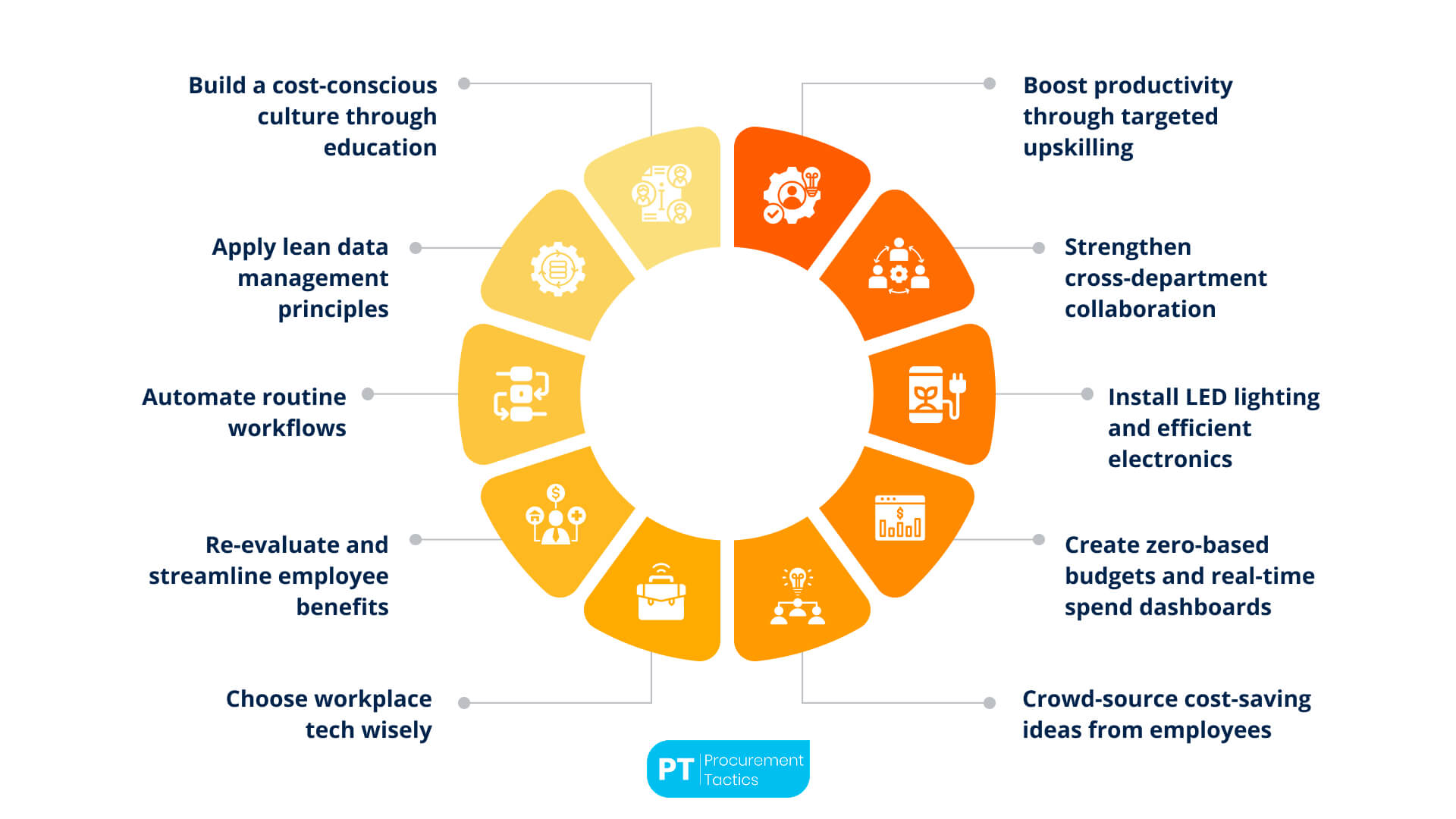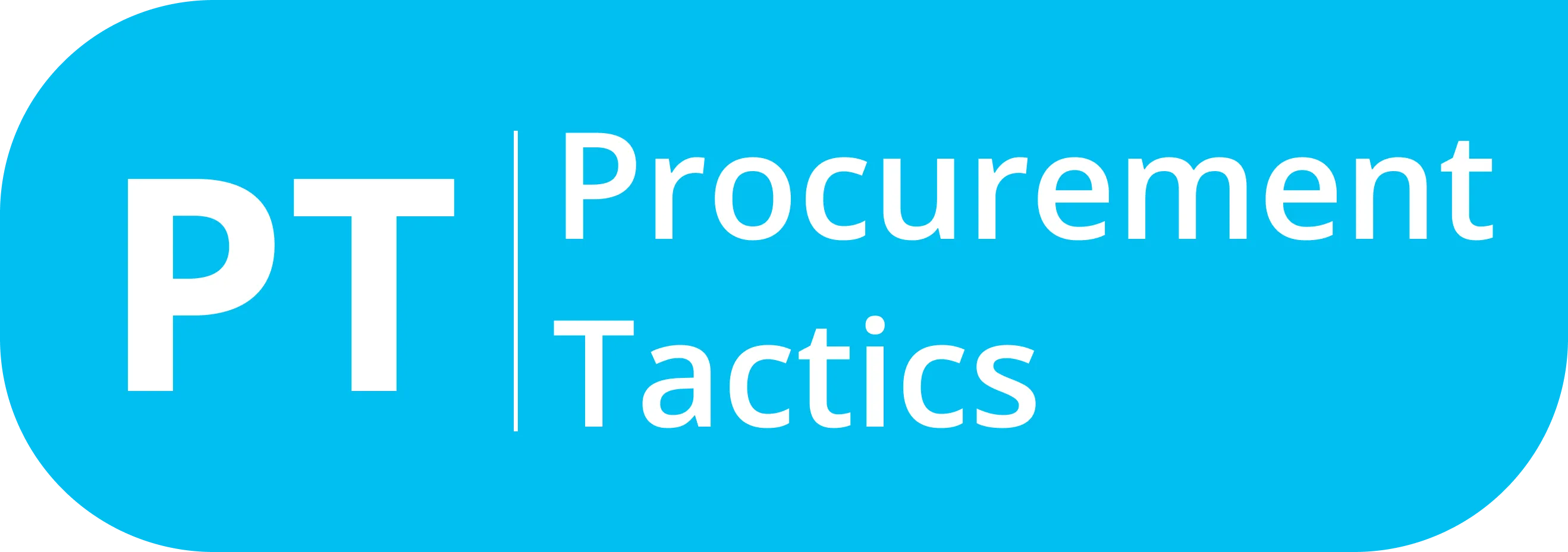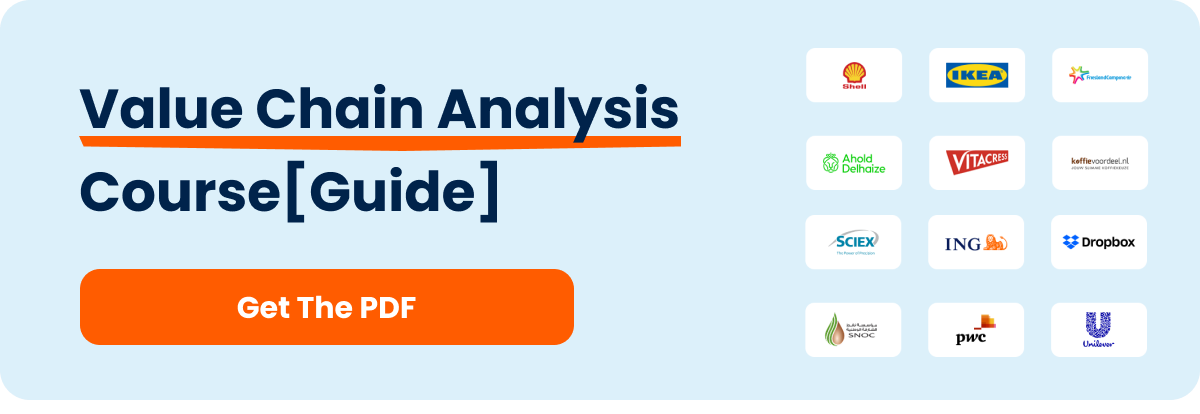Written by Marijn Overvest | Reviewed by Sjoerd Goedhart | Fact Checked by Ruud Emonds | Our editorial policy
Cost-Saving Measures — Explained + Examples

As taught in the Value Chain Analysis Course / ★★★★★ 4.9 rating
What are Cost-Saving Measures?
- Cost-saving measures are strategic actions that cut operational and procurement expenses while maintaining required service or product quality.
- Cost-saving measures focus on eliminating waste and inefficiencies across processes to lower an organization’s total cost of ownership.
- Cost-saving measures leverage data‑driven negotiations, automation, and continuous improvement to achieve sustainable budget reductions.
What are Cost-Saving Measures?
Cost‑saving measures are deliberate actions an organization takes to lower its total cost base without sacrificing, and often while enhancing, quality, service, or employee satisfaction.
Cost‑saving measures hit three targets:
(1) Eliminate waste by retiring low‑margin products, streamlining processes, shifting suitable roles to remote work, and cross‑training staff to shrink facility and labor costs.
(2) Spend smarter through strict budgeting, bundled purchases, tough supplier negotiations, and leasing big‑ticket equipment to protect cash flow.
(3) Cut overhead by digitizing records, automating routine tasks, switching to LED lighting, reinforcing recycling and preventive maintenance, and rewarding employee savings ideas. Together, these actions free cash for innovation and fortify financial resilience.
Examples of Cost-Saving Measures
Some cost-saving strategies include streamlining processes, investing in advanced technology, and building relationships with great suppliers to save money and time. Here are a few cost-saving measures to also consider:

1. Trim spending on non‑essentials
Start every cost program by auditing perks, subscriptions, décor, and luxury business travel. Eliminating low‑value items frees cash for mission‑critical projects without touching headcount or customer experience.
How to do it:
Run a quarterly audit of perks, subscriptions, and travel, assign owners to cancel or downgrade anything with <50 % utilization, and route all new discretionary requests through CFO sign‑off.
2. Postpone non‑essential IT upgrades
If an existing system still meets security and performance needs, defer refresh cycles or replace several niche tools with a single multi‑function platform to avoid duplicate license fees and migration downtime.
How to do it:
Extend warranties, apply security patches, and consolidate overlapping SaaS licences under a single enterprise plan, approving fresh hardware or software only when a clear ROI or compliance risk is documented.
3. Buy energy‑efficient, multi‑purpose equipment
Investing once in faster, all‑in‑one machines (or office devices rated for low power draw) cuts utility bills and halves future replacement spend, paying back the premium price over the asset’s life.
How to do it:
Add an Energy‑Star/TCO clause to RFQs, replace multiple single‑function devices with one low‑power all‑in‑one unit, and track post‑installation utility data to verify savings and claim local rebates.
4. Scale back R&D in downturns
Temporarily slowing speculative research keeps core innovation capacity alive while protecting cash flow; management can re‑accelerate as soon as revenues rebound.
How to do it:
Freeze blue‑sky projects, funnel resources to near‑term, revenue‑linked experiments, and run monthly stage‑gate reviews so paused work can restart quickly when cash flow improves.
5. Replace most business travel with virtual meetings
Setting clear trip‑approval rules and tighter per-diem slashes airfare, accommodation, and carbon emissions while still allowing essential site visits.
How to do it:
Require VP‑level approval for any trip, default all internal and client check‑ins to video, cap per diems, and reserve travel only for critical site work or revenue‑generating visits.
6. Adopt remote or hybrid work and downsize office space
Occupancy analytics often reveal 30‑50 % desk under‑utilization; consolidating floors or moving to hub‑and‑spoke coworking models drives major rent and utility savings.
How to do it:
Track badge and sensor data, shift teams to 2–3 in‑office days, sublease unused floors, and offer coworking stipends to keep collaboration options while slashing rent and utilities.
7. Automate desk booking & space management
Smart workplace‑management software dynamically allocates seats, meeting rooms, and parking, letting some firms cut real‑estate costs by nearly a third and save a full FTE in admin time.
How to do it:
Roll out a cloud workplace app that lets staff reserve desks from their phones, releases no‑shows after 15 minutes, and feeds occupancy analytics to adjust cleaning schedules and shrink real‑estate commitments.
8. Renegotiate supplier and SaaS contracts
Extending commitment periods, rolling over unused credits, or bundling services can lower unit prices and smooth cash outlays, especially as more teams use cloud-based services in fast-growing data or cloud environments.
How to do it:
Aggregate usage data 90 days before renewal, bundle services, or extend terms, leverage competitive quotes, and trade longer commitments for 10–20 % price cuts plus flexible exit clauses.
9. Right‑size cloud compute and storage
Resource monitors and automated shutdown scripts prevent runaway spend; optimised ETL jobs ensure you pay only for the capacity actually delivering value.
How to do it:
Activate autoscaling and off‑hours shutdown policies, purge orphaned volumes, and tier infrequently accessed data to lower‑cost object storage to avoid paying for idle capacity.
10. Conduct regular data & process audits
Quarterly reviews of dashboards, tables, and workflows surface redundant assets that drain licences, compute, and staff hours, tightening operational efficiency without affecting insights.
How to do it:
Hold quarterly lineage reviews to flag unused tables, stale dashboards, and duplicate workflows, then decommission or consolidate them to reclaim licenses, compute, and staff hours.

11. Build a cost‑conscious culture through education
Training producers and consumers to “treat company resources like their own” embeds healthy spending habits and encourages staff to flag waste in real time.
How to do it:
Deliver micro‑learning on spend accountability, share team cost scorecards, and publicly reward employees whose waste‑cutting ideas meet verified savings targets.
12. Apply lean data‑management principles
Just‑in‑time data ingestion, fewer collection points, and smaller test environments reduce storage, processing, and maintenance costs while still meeting analytical needs.
How to do it:
Ingest data just‑in‑time, limit retention to business‑critical windows, and spin up small, ephemeral test environments only during CI/CD runs, trimming storage, processing, and maintenance overhead.
13. Automate routine workflows
RPA, low‑code tools, or integrated workplace assistants eliminate repetitive approvals and reconciliations, cutting labour hours and error‑correction rework.
How to do it:
Identify high‑volume, rules‑based tasks (e.g., invoice matching, onboarding approvals) and pilot RPA or low‑code bots, measuring cycle time and error reductions before scaling across business units.
14. Re‑evaluate and streamline employee benefits
Usage analysis of health plans, gym memberships, and fringe perks often shows low uptake; reallocating that budget to high‑value benefits improves engagement and trims premiums.
How to do it:
Mine six‑month utilization data, sunset perks with <30 % uptake, renegotiate health‑plan tiers, and redirect freed budget to high‑impact options like telemedicine or tuition support.
15. Choose workplace tech wisely
Favour solutions that integrate with existing suites and require minimal user training; avoiding “tool sprawl” prevents redundant licences and hidden onboarding costs that can top $ 55k per 1,000 users.
How to do it:
Require a cross‑functional review to confirm SSO compatibility, feature overlap, and a ≤2‑hour onboarding time, blocking any app that duplicates core‑suite functions or inflates license counts.
16. Boost productivity through targeted upskilling
Well‑trained employees finish tasks faster and with fewer errors, reducing costly rework, turnover, and the need for external consultants.
How to do it:
Run skills‑gap analyses, deliver micro‑learning tied to role KPIs, and track post‑training throughput and error rates to prove ROI and cut dependence on external consultants.
17. Strengthen cross‑department collaboration
Regular syncs between HR, Facilities, and IT reduce duplicated purchases (e.g., parallel software or furniture orders) and ensure office changes don’t trigger last‑minute, high‑priced fixes.
How to do it:
Form a monthly purchasing council with HR, Facilities, and IT, publish a shared buying calendar, and require joint sign‑off on orders above a set threshold to eliminate duplicate purchases and late‑stage premium fixes.
18. Install LED lighting and efficient electronics
Simple retrofits to high‑usage areas immediately lower utility bills and shrink carbon footprints, giving an ROI measured in months.
How to do it:
Audit high‑use areas, swap fluorescents for LEDs with occupancy sensors, tap local utility rebates, and log kWh reductions to confirm a payback in under 12 months.
19. Create zero‑based budgets and real‑time spend dashboards
Line‑item visibility lets managers spot overruns early, adjust in‑flight projects, and prove ROI using standard formulas or NPV when savings span multiple years.
How to do it:
Rebuild each cost center’s budget from scratch, stream ERP data into live BI dashboards with variance alerts, and freeze overruns until managers present ROI or NPV justifications.
20. Crowd‑source cost‑saving ideas from employees
Incentivised suggestion schemes leverage front‑line insight, turning every worker into a continuous‑improvement agent and uncovering low‑hanging savings that management may miss.
How to do it:
Launch an online idea portal with tiered cash rewards, evaluate submissions monthly, and showcase winning suggestions company‑wide to keep the savings flywheel turning.
Real-World Examples of Good Cost-Saving Measures
If you’re having doubts about taking cost-saving measures, let the following companies give you some inspiration:
1. Amazon Automation
In 2012, Amazon decided to invest in robotics by acquiring Kiva Systems. With up to 520,000 robotic drive units and over a million job opportunities, advanced technology has led them to reduce their labor costs, faster order processing, and increased efficiency.
2. Google Renewable Energy Investments
Google kickstarted its environment-friendly plans in 2010 and reached 100% renewable energy for its global operations 7 years later. The entire company not only helps save the globe but also saves millions of dollars in utility bills, especially electricity.
3. Walmart Supply Chain Optimization
Walmart was able to gain a competitive edge in the market by optimizing its supply chain management. With a simple strategy of introducing barcode scanning, they were able to automate inventory management, which saved them a lot of time and millions of dollars in labor costs.
4. IBM Adaptation to Remote Work
In 1979, IBM experimented with remote work by sending five employees to work from home. By 1983, 2000 IBM employees were working remotely. Not only that IBM improve customer and employee satisfaction, but it also resulted in substantial savings through the reduction of office space and associated expenses.
5. Netflix Cloud
Netflix switched to cloud-based infrastructure in 2008, which cut hardware costs. By embracing this change, they only pay for what they use and avoid hefty upfront investments.
Importance of Implementing Proper Cost-Saving Measures
Companies that practice proper cost-saving measures excel in the world of business. You can also be one of them by understanding the importance of these actions.
First, you can offer better pricing and attract more customers by implementing effective cost-saving strategies. You gain a competitive advantage in the market and allow more opportunities for your business.
Second, you can generate more savings that you may redirect toward strategic investments to drive innovation. You can use the budget for departments in your company that need improvement for business expansion and long-term success.
Lastly, by trimming down inessential expenses, you can improve your profit margins and welcome financial stability with open arms. You allow room for growth and enhance operational profitability with better investment opportunities and a more ambitious advantage.
Purpose of Cost-Saving Measures
Other than saving money and minimizing expenses, effective cost-saving measures can also provide you with the following:
1. Financial Resilience
This creates a cushion for you to continue running your business during economic downturns or unexpected challenges.
2. Long-term Sustainability
This fosters a culture of responsible resource management that contributes to your goal of long-term sustainability and environmental responsibility.
3. Resource Allocation
Last, but not the least, you can allocate resources and funds towards areas that directly contribute to the bottom line of your business.
Types of Cost-Saving Plans
Keep in mind these two things: RI – Reduce and Invest. These will help you better deploy cost-saving measures and prioritize actions to take.
1. Reduce Expenses
This may be your number one goal. This type of strategy solely involves cutting back expenses and saving money. Although this is the easiest option, this may bring you more harm than good if used unwisely.
2. Invest and Increase
Do you have extra money to spend? Then invest wisely in technology. In that way, you induce passive income and grow your wealth. Another perk when investing is that you create bonds and partnerships that can help your business grow exponentially.
Conclusion
Incorporating effective cost-saving measures into your business operations is not just a short-term effort. Rather, it is a continuous commitment to financial responsibility and strategic growth. It also needs a collective effort from all of your departments and employees.
By embracing operational efficiency, supplier negotiations, energy conservation, employee training, and other tactics, your streamlined business can achieve a great number of returns in sales, a competitive edge, and long-term financial resilience.
Through real-world examples and a deeper understanding of the importance of cost-saving measures, you can pave the way for your own company’s prosperous and sustainable future.
I have created a free-to-download, editable cost price breakdown template. It’s a PowerPoint file, together with an Excel file, that can help you with your cost-savings goals. I even created a video where I’ll explain how you can use this template.
Frequentlyasked questions
What are cost-savings?
Cost-saving is one strategy that you can use to reduce unnecessary expenses without sacrificing the quality of products and services. Thus, cost-saving measures are deliberate actions made by companies like yours to avoid financial stresses and improve general operational performance.
Why are cost-saving measures important?
Implementing cost-saving measures offers several benefits to your business. It can help you attract more customers, gain a competitive edge in the market, and generate savings for strategic investments. By trimming down inessential expenses, you can also improve your profit margins and enhance operational profitability, creating more room for growth and better investment opportunities.
What is the purpose of implementing cost-saving measures in a business?
Cost-saving measures are vital in business, as they reduce expenses without affecting quality. They improve profitability, financial health, and overall performance, leading to growth opportunities. They also cultivate responsible resource management and sustainability. Overall, cost-saving measures create an efficient, competitive, and financially resilient business.
About the author
My name is Marijn Overvest, I’m the founder of Procurement Tactics. I have a deep passion for procurement, and I’ve upskilled over 200 procurement teams from all over the world. When I’m not working, I love running and cycling.






